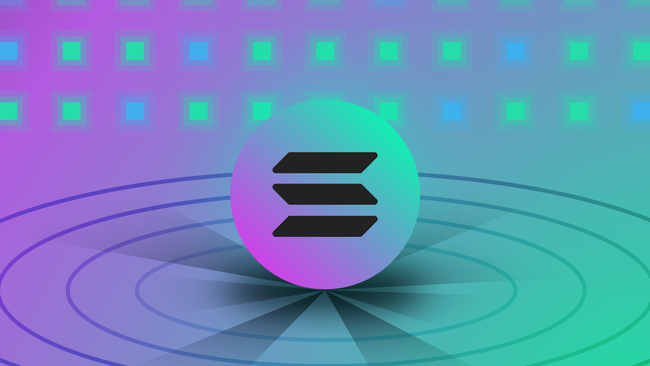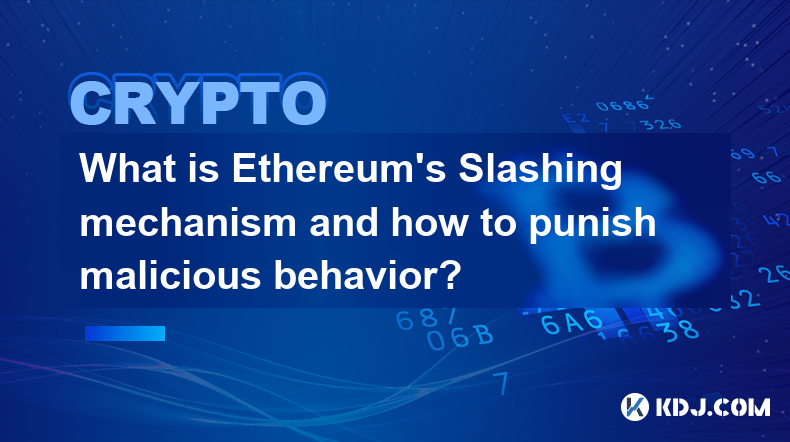-
 Bitcoin
Bitcoin $83,159.2924
3.30% -
 Ethereum
Ethereum $1,553.1922
0.80% -
 Tether USDt
Tether USDt $0.9995
0.02% -
 XRP
XRP $2.0146
0.93% -
 BNB
BNB $585.4842
1.16% -
 Solana
Solana $120.5794
5.03% -
 USDC
USDC $0.9999
0.00% -
 Dogecoin
Dogecoin $0.1585
1.06% -
 TRON
TRON $0.2420
2.56% -
 Cardano
Cardano $0.6199
-0.48% -
 UNUS SED LEO
UNUS SED LEO $9.3355
-0.83% -
 Chainlink
Chainlink $12.5523
1.28% -
 Avalanche
Avalanche $18.9709
2.17% -
 Stellar
Stellar $0.2332
0.12% -
 Shiba Inu
Shiba Inu $0.0...01215
2.19% -
 Sui
Sui $2.1773
0.99% -
 Hedera
Hedera $0.1666
-3.18% -
 Toncoin
Toncoin $2.8330
-3.73% -
 Bitcoin Cash
Bitcoin Cash $312.9224
5.99% -
 MANTRA
MANTRA $6.4126
-0.68% -
 Litecoin
Litecoin $75.4754
0.65% -
 Polkadot
Polkadot $3.5440
0.42% -
 Dai
Dai $0.9999
0.02% -
 Bitget Token
Bitget Token $4.3297
2.11% -
 Hyperliquid
Hyperliquid $15.4245
5.95% -
 Ethena USDe
Ethena USDe $0.9987
0.01% -
 Pi
Pi $0.6438
8.19% -
 Monero
Monero $209.0819
3.60% -
 Uniswap
Uniswap $5.1706
0.84% -
 OKB
OKB $52.9695
-1.14%
how to create a token on solana
By following these steps, developers can create their own tokens on Solana, taking advantage of its speed, scalability, and low transaction fees to build and deploy decentralized applications.
Nov 10, 2024 at 05:58 pm

How to Create a Token on Solana: A Comprehensive Guide
In the rapidly evolving blockchain landscape, Solana has emerged as a high-performing platform for building decentralized applications (dApps) and issuing tokens. Its speed, low transaction fees, and scalability make it an ideal choice for token creators looking to leverage blockchain technology.
Creating a token on Solana involves a few key steps that require technical proficiency and a solid understanding of blockchain concepts. This guide will provide a comprehensive overview of each step, enabling you to navigate the process effectively and launch your own token on Solana.
Step 1: Set Up Your Solana Development Environment
- Install the Solana CLI (command-line interface) by following the official guide.
- Create a Solana wallet using the 'solana-keygen' command and store the generated seed phrase securely.
- Fund your wallet with SOL, the native cryptocurrency of Solana, to cover transaction fees.
Step 2: Design and Define Your Token
- Determine the token's purpose, supply, and distribution mechanisms.
- Choose a token name, symbol, and total supply that aligns with your project requirements.
- Define the token decimals and the maximum supply limit (if any).
Step 3: Create a Token Metadata Program
- Create a Solana program to handle token metadata by deploying the predefined metadata program provided by Solana.
- This program will store token metadata, including the token name, symbol, uri, and other attributes.
Step 4: Initialize the Token
- Create an SPL (Solana Program Library) token account that will hold the tokens.
- Initialize the token account using the 'spl-token initialize-account' command.
- Specify the token mint (address), token account (address), and token owner (address).
Step 5: Mint the Token
- Create an SPL token mint account using the 'spl-token create-mint' command.
- This account will define the token properties and manage token issuance.
- Specify the token mint authority (address) responsible for minting tokens.
Step 6: Associate Token Metadata
- Associate the token metadata program with the token mint using the 'metadata set-metadata' command.
- Provide the metadata account address and the metadata uri.
- This links token metadata to the newly created token.
Step 7: Test Your Token
- Use the Solana CLI to interact with your token, query its properties, and perform test transactions.
- Ensure the token behaves as expected and verify its metadata and functionality.
Step 8: Deploy Your Token
- Deploy your token to the Solana mainnet or a testnet for wider distribution.
- Add your token to Solana ecosystem tools, such as Solflare and Phantom wallets, to enable users to interact with it.
Disclaimer:info@kdj.com
The information provided is not trading advice. kdj.com does not assume any responsibility for any investments made based on the information provided in this article. Cryptocurrencies are highly volatile and it is highly recommended that you invest with caution after thorough research!
If you believe that the content used on this website infringes your copyright, please contact us immediately (info@kdj.com) and we will delete it promptly.
- SEI Price Formed a Falling Wedge Pattern, Which Historically Signaled a Bullish Breakout
- 2025-04-12 11:00:13
- Cardano (ADA) Builds Toward $0.90 Milestone Amid Renewed Optimism
- 2025-04-12 11:00:13
- Does Stake.us Use Real Money? Here's The Truth About Their Games and How to Get Free Stake Cash (SC)
- 2025-04-12 10:55:13
- The Bank of England’s Financial Policy Committee (FPC) said in its April 2025 record that while stablecoins continue to grow in scale and relevance
- 2025-04-12 10:55:13
- Troller Cat ($TCAT) - The New Meme Coin You Shouldn't Miss
- 2025-04-12 10:50:13
- Priced at Just $0.025, This Emerging DeFi Crypto Is Attracting Long-Term Investors
- 2025-04-12 10:50:13
Related knowledge

What is Ethereum’s Slashing mechanism and how to punish malicious behavior?
Feb 20,2025 at 03:08am
Key PointsOverview of slashingDifferent types of slashing in EthereumIncentives and consequences of slashingIdentifying and reporting slashed validatorsOngoing discussions and potential improvementsEthereum's Slashing Mechanism: Punishing Malicious BehaviorEthereum's slashing mechanism is an essential tool for ensuring network security and punishing mal...

What is the verifier node of Ethereum and how to become a verifier?
Feb 19,2025 at 06:00pm
The Verifier Node of Ethereum: A Comprehensive GuideKey Points:What is a Verifier Node?How to Become a Verifier NodeResponsibilities and Rewards of a Verifier NodeMinimum Requirements for Becoming a Verifier NodePotential Difficulties in Running a Verifier Node1. What is a Verifier Node?A Verifier Node is an independent entity on the Ethereum network th...

What is Ethereum’s staking, and how to participate and earn money?
Feb 19,2025 at 04:37pm
Key Points:Understanding Ethereum's Staking MechanismSteps to Participate in StakingBenefits and Rewards of StakingSecurity and Risk ConsiderationsTechnical Requirements and Hardware OptionsPotential Challenges and Troubleshooting TipsFAQs on Ethereum StakingWhat is Ethereum's Staking?Proof-of-Stake (PoS) is a consensus mechanism used in blockchain netw...

What is Ethereum’s DAO (Decentralized Autonomous Organization) and how does it work?
Feb 20,2025 at 03:12am
Key PointsDefinition and Structure of a DAOGovernance and Decision-Making in DAOsBenefits and Use Cases of DAOsChallenges and Limitations of DAOsWhat is Ethereum's DAO (Decentralized Autonomous Organization) and How Does It Work?Definition and Structure of a DAOA Decentralized Autonomous Organization (DAO) is an innovative governance and management fram...

What is Ethereum's multi-signature wallet and how to improve security?
Feb 20,2025 at 02:18pm
Key Points:Understanding the Concept of a Multi-Signature WalletBenefits and Drawbacks of Multisig WalletsRequirements for Setting Up a Multisig WalletStep-by-Step Guide to Generating a Multisig WalletImplementing Strategies for Enhanced Security1. Understanding the Concept of a Multi-Signature WalletA multi-signature (multisig) wallet in the Ethereum e...

What is Ethereum's oracle and how to provide data for smart contracts?
Feb 21,2025 at 01:30am
Key Points:Understanding the concept of oracles in EthereumExploring different types of oraclesDetailed guide on how to provide data for smart contractsAddressing potential challenges and considerationsWhat is Ethereum's Oracle?Oracles are crucial components in the Ethereum ecosystem, enabling smart contracts to access real-world data and off-chain even...

What is Ethereum’s Slashing mechanism and how to punish malicious behavior?
Feb 20,2025 at 03:08am
Key PointsOverview of slashingDifferent types of slashing in EthereumIncentives and consequences of slashingIdentifying and reporting slashed validatorsOngoing discussions and potential improvementsEthereum's Slashing Mechanism: Punishing Malicious BehaviorEthereum's slashing mechanism is an essential tool for ensuring network security and punishing mal...

What is the verifier node of Ethereum and how to become a verifier?
Feb 19,2025 at 06:00pm
The Verifier Node of Ethereum: A Comprehensive GuideKey Points:What is a Verifier Node?How to Become a Verifier NodeResponsibilities and Rewards of a Verifier NodeMinimum Requirements for Becoming a Verifier NodePotential Difficulties in Running a Verifier Node1. What is a Verifier Node?A Verifier Node is an independent entity on the Ethereum network th...

What is Ethereum’s staking, and how to participate and earn money?
Feb 19,2025 at 04:37pm
Key Points:Understanding Ethereum's Staking MechanismSteps to Participate in StakingBenefits and Rewards of StakingSecurity and Risk ConsiderationsTechnical Requirements and Hardware OptionsPotential Challenges and Troubleshooting TipsFAQs on Ethereum StakingWhat is Ethereum's Staking?Proof-of-Stake (PoS) is a consensus mechanism used in blockchain netw...

What is Ethereum’s DAO (Decentralized Autonomous Organization) and how does it work?
Feb 20,2025 at 03:12am
Key PointsDefinition and Structure of a DAOGovernance and Decision-Making in DAOsBenefits and Use Cases of DAOsChallenges and Limitations of DAOsWhat is Ethereum's DAO (Decentralized Autonomous Organization) and How Does It Work?Definition and Structure of a DAOA Decentralized Autonomous Organization (DAO) is an innovative governance and management fram...

What is Ethereum's multi-signature wallet and how to improve security?
Feb 20,2025 at 02:18pm
Key Points:Understanding the Concept of a Multi-Signature WalletBenefits and Drawbacks of Multisig WalletsRequirements for Setting Up a Multisig WalletStep-by-Step Guide to Generating a Multisig WalletImplementing Strategies for Enhanced Security1. Understanding the Concept of a Multi-Signature WalletA multi-signature (multisig) wallet in the Ethereum e...

What is Ethereum's oracle and how to provide data for smart contracts?
Feb 21,2025 at 01:30am
Key Points:Understanding the concept of oracles in EthereumExploring different types of oraclesDetailed guide on how to provide data for smart contractsAddressing potential challenges and considerationsWhat is Ethereum's Oracle?Oracles are crucial components in the Ethereum ecosystem, enabling smart contracts to access real-world data and off-chain even...
See all articles





















![Crypto Otaku - CRYPTO CHAOS! 83K BITCOIN! CRYPTO RALLY!! XCN , JASMY , SWFTC LEAD!!! [Episode 228] Crypto Otaku - CRYPTO CHAOS! 83K BITCOIN! CRYPTO RALLY!! XCN , JASMY , SWFTC LEAD!!! [Episode 228]](/uploads/2025/04/12/cryptocurrencies-news/videos/crypto-otaku-crypto-chaos-k-bitcoin-crypto-rally-xcn-jasmy-swftc-lead-episode/image-1.webp)

































































